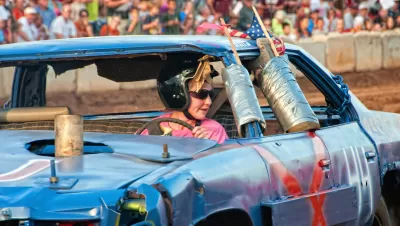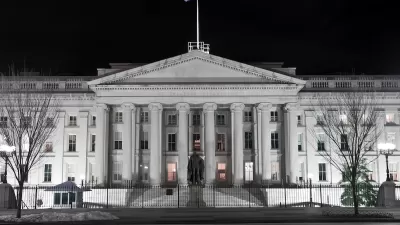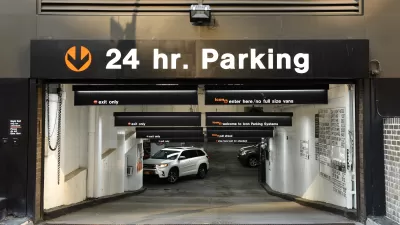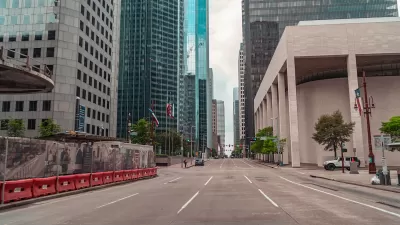The automobile has been pitched as a machine for freedom, but travelling inside a small metal box, strapped to a chair, forced to focus on the road while your life is threatened by two-ton projectiles doesn’t sound like freedom to David Levinson.

The automobile has been pitched as a machine for freedom. But you travel caged inside a small metal box, strapped to your chair, while your life is being threatened randomly by high speed two-ton projectiles, forced to keep eyes focused on the road and obliged to place hands at the 10 and 2 o’clock positions on the wheel, with your foot constrained to a small area on the floor. This doesn’t sound like freedom to me.

If you choose to enter a freeway, you are not even permitted to leave your car til you exit the road.
On streets, your behavior is governed by inanimate traffic lights, signs, and paint, which are violated at penalty of automatically generated fine or imprisonment.
This is all self-imposed, so it is more like committing yourself to an institution, the automobility asylum, perhaps, than prison which is imposed by others.
An alternative view is that freedom is not ensconced in a machine but in a way you can interact with the world. If you can, at your whim, when you want to, do what you want, engage in the activities you want, without fearing for your life, that is closer to freedom.
Jarrett Walker argues frequency is freedom. This is closer to the truth. While on a bus or train I am still caged in a metal box, it is a larger box, I am not strapped in, and I am much safer. I am also now free to do something with my time while in motion, not constrained to monitor the road.
And where can I travel in these safe freedom machines, reaching many more opportunities? Cities. This gives a new meaning to the expression: Urban air makes you free.
‘But I can reach more places in a car than on transit in the same amount of time, almost everywhere,’ you argue. This is true, if you ignore the costs you impose on society, if you ignore the fixed costs of that opportunity to you, and if you ignore the ability to use time in some other way, as is available when not driving.
Freedom from car ownership, freedom from the obligation of driving, and freedom from negative externalities borne by the community at large are how we should reframe transport and land use goals. What can we do to give people those freedoms?
FULL STORY: The Automobile as Prison. The City as Freedom.

Study: Maui’s Plan to Convert Vacation Rentals to Long-Term Housing Could Cause Nearly $1 Billion Economic Loss
The plan would reduce visitor accommodation by 25,% resulting in 1,900 jobs lost.

Placekeeping: Setting a New Precedent for City Planners
How a preservation-based approach to redevelopment and urban design can prevent displacement and honor legacy communities.

Using Old Oil and Gas Wells for Green Energy Storage
Penn State researchers have found that repurposing abandoned oil and gas wells for geothermal-assisted compressed-air energy storage can boost efficiency, reduce environmental risks, and support clean energy and job transitions.

Washington State Plans Ambitious ‘Cycle Highway’ Network
The state is directing funding to close gaps in its existing bike network and make long-distance trips more accessible.

Homeowners Blame PG&E for Delays in ADU Permits
The utility says it has dramatically reduced its backlog, but applicants say they still face months-long delays for approvals for new electrical work.

Rethinking Wildfire Defense: How a Landscape Approach Can Protect Neighborhoods
Post-fire analysis of the Eaton Fire reveals that a landscape approach — including fire-resistant vegetation, home hardening, and strategic planning — can help reduce wildfire risk, challenging assumptions that trees and plants are primary fire hazards.
Urban Design for Planners 1: Software Tools
This six-course series explores essential urban design concepts using open source software and equips planners with the tools they need to participate fully in the urban design process.
Planning for Universal Design
Learn the tools for implementing Universal Design in planning regulations.
Borough of Carlisle
Caltrans
Heyer Gruel & Associates PA
Institute for Housing and Urban Development Studies (IHS)
City of Grandview
Harvard GSD Executive Education
Salt Lake City
NYU Wagner Graduate School of Public Service
City of Cambridge, Maryland





























